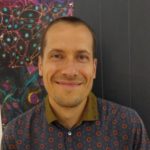Link to Pubmed [PMID] – 21825996
Link to DOI – 10.1097/MOO.0b013e32834a8c33
Curr Opin Otolaryngol Head Neck Surg 2011 Oct; 19(5): 369-75
Hearing starts with the deflection of the hair bundle that sits on top of each mechanosensory hair cell. Recent advances indicate that the hair bundle mechanically amplifies its inputs to participate in the active process that boosts the ear’s technical specifications. This review integrates experimental and modeling studies to dissect the mechanisms of active mechanosensation by the hair-cell bundle.The exquisite mechanosensitivity of the hair-cell bundle results from a precisely choreographed interplay between a structure of mechanically coupled stereocilia that ensures efficient transmission of sound-energy to the transduction machinery, Ca-driven adaptation that provides fast electromechanical feedback on hair-bundle movements, and a mechanical nonlinearity inherent to the transduction process that fosters autonomous hair-bundle oscillations. In cochlear outer hair cells, cooperation between active hair-bundle motility and somatic electromotility brings the cochlear partition to the brink of an oscillatory instability, at which general physical laws ensure optimal properties for auditory detection.The study of active hair-bundle mechanics promotes a general principle for auditory detection that is based on the generic properties of self-sustained mechanical oscillators. This principle may guide future engineering design of cochlear implants.

